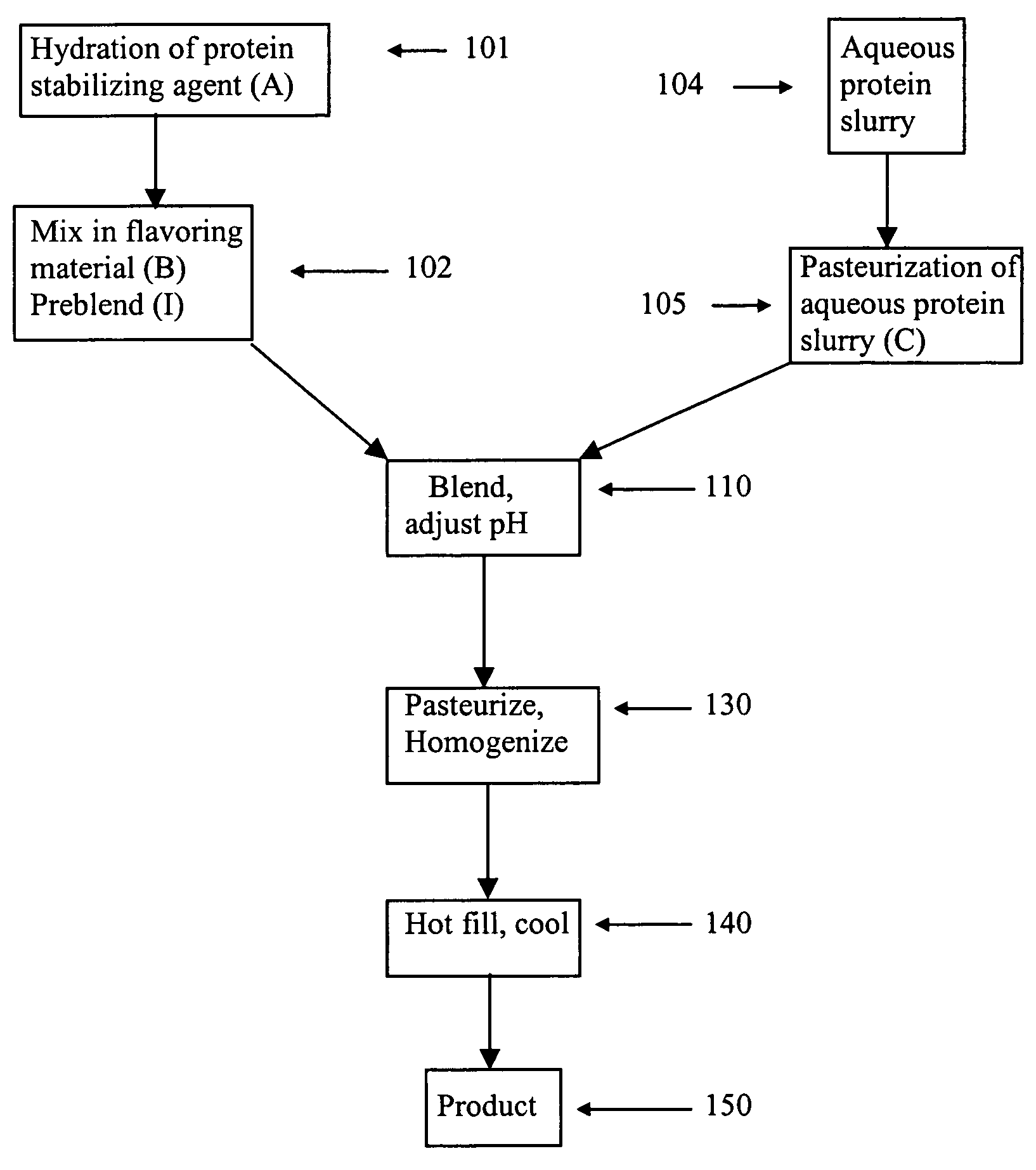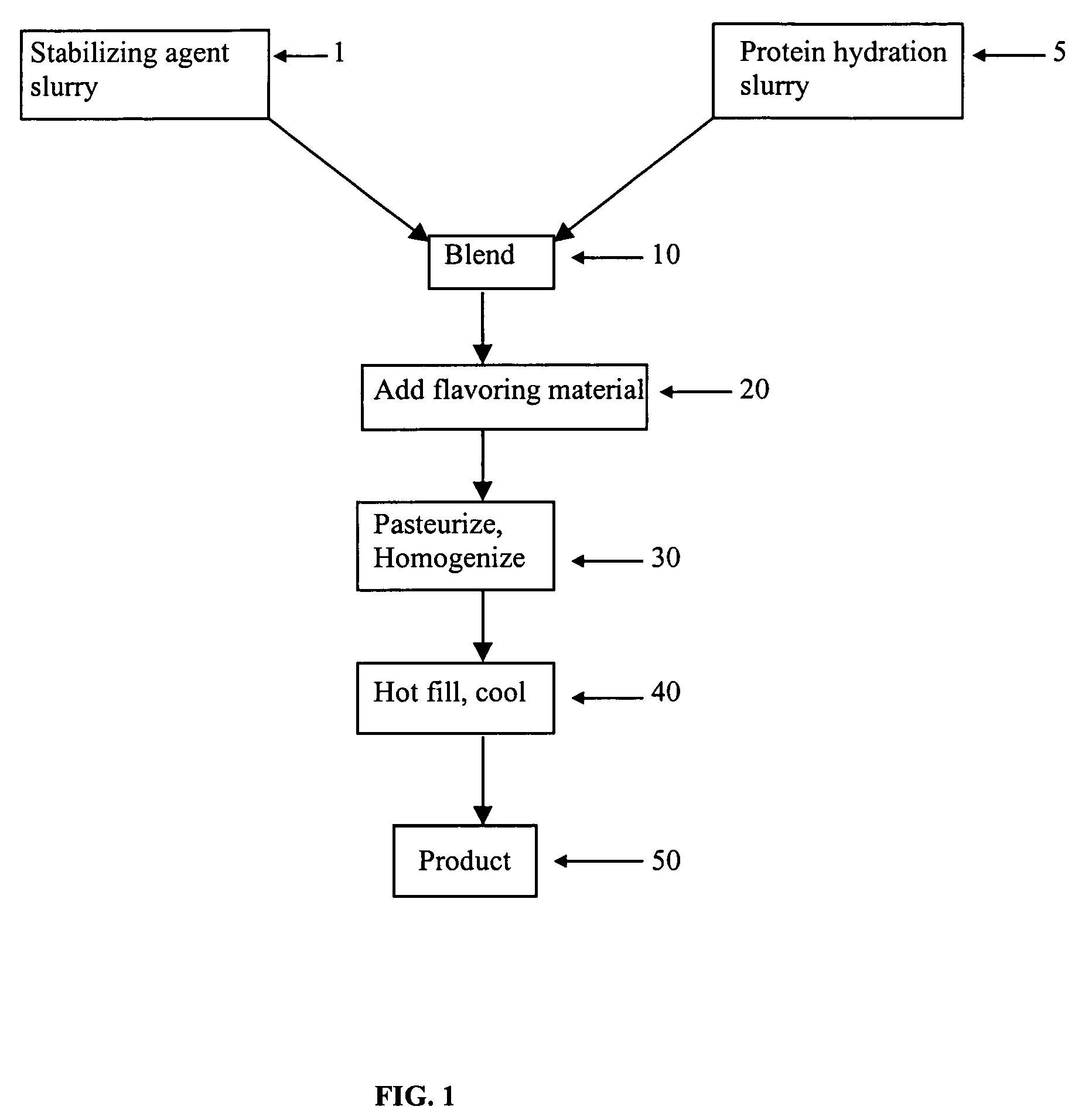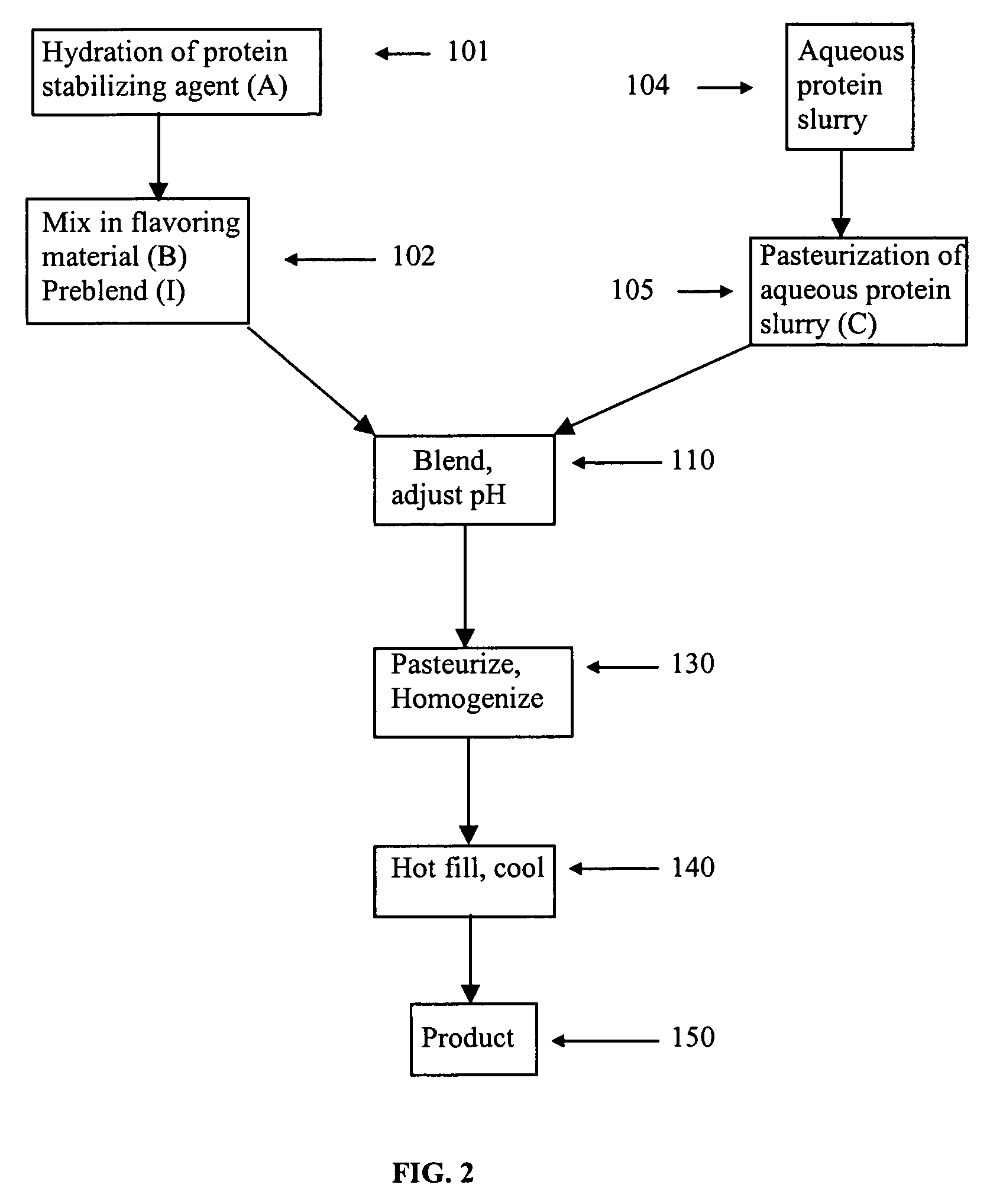Acid beverage composition utilizing an aqueous protein component
a technology of aqueous protein and a beverage, which is applied in the field of preparing a protein-based acid beverage, can solve the problems of protein settleout, protein insolubility in an acidic environment, undesirable quality,
- Summary
- Abstract
- Description
- Claims
- Application Information
AI Technical Summary
Benefits of technology
Problems solved by technology
Method used
Image
Examples
example 1
[0086]To an extraction tank is added 100 pounds of defatted soybean flakes and 1000 pounds water. The contents are heated to 90° F. and sufficient calcium hydroxide is added to adjust the pH to 9.7. This provides a weight ratio of water to flakes of 10:1. The flakes are separated from the extract and reextracted with 600 lbs. of water having a pH of 9.7 and a temperature of 90° F. This second extraction step provides a weight ratio of water to flakes of 6:1. The flakes are removed by centrifugation, and the first and second extracts are combined and adjusted to a pH of 4.5 with either hydrochloric acid or phosphoric acid, which forms a precipitated protein curd and a soluble aqueous whey. The acid precipitated water insoluble curd is separated from the aqueous whey by centrifuging and washing in a CH-14 centrifuge at a speed of 4,000 rpm and a Sharples P3400 centrifuge at a speed of 3,000 rpm. Protein curds are re-suspended in water at a 10-12% solid concentration and the pH is adju...
example 2
[0087]To an extraction tank is added 100 pounds of defatted soybean flakes and 600 pounds water. The contents are heated to 90° F. and sufficient calcium hydroxide is added to adjust the pH to 9.7. This provides a weight ratio of water to flakes of 6:1. The flakes are separated from the extract and reextracted with 400 lbs. of water having a pH of 9.7 and a temperature of 90° F. This second extraction step provides a weight ratio of water to flakes of 4:1. The flakes are removed by centrifugation, and the first and second extracts are combined and adjusted to a pH of 4.5 with phosphoric acid, which forms a precipitated protein curd and a soluble aqueous whey. The acid precipitated water insoluble curd is separated from the aqueous whey by centrifuging and washing in a CH-14 centrifuge at a speed of 4,000 rpm and a Sharples P3400 centrifuge at a speed of 3,000 rpm. Protein curds are re-suspended in water at a 10-12% solid concentration to give a diluted curd. Added to the diluted cur...
example 3
[0088]The procedure of Example 1 is repeated with the following exception. A 3.4% total solids aqueous slurry of freshly prepared calcium phosphate is added after the first addition of an aqueous solution of a mixture of sodium hydroxide and potassium hydroxide. The product obtained is a calcium fortified aqueous protein material.
PUM
 Login to View More
Login to View More Abstract
Description
Claims
Application Information
 Login to View More
Login to View More - R&D
- Intellectual Property
- Life Sciences
- Materials
- Tech Scout
- Unparalleled Data Quality
- Higher Quality Content
- 60% Fewer Hallucinations
Browse by: Latest US Patents, China's latest patents, Technical Efficacy Thesaurus, Application Domain, Technology Topic, Popular Technical Reports.
© 2025 PatSnap. All rights reserved.Legal|Privacy policy|Modern Slavery Act Transparency Statement|Sitemap|About US| Contact US: help@patsnap.com



